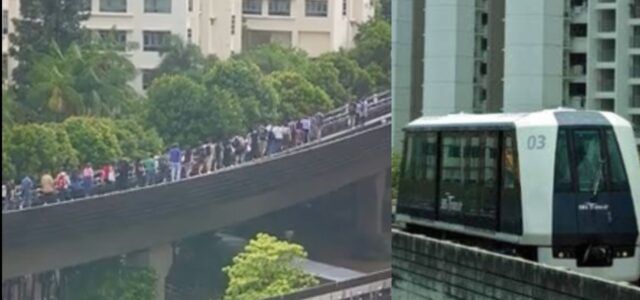Four-hour power fault cripples Sengkang-Punggol LRT: Commuters voice growing frustration
four-hour-power-fault-cripples-sengkang-punggol-lrt-commuters-voice-growing-frustration
#Fourhour #power #fault #cripples #SengkangPunggol #LRT #Commuters #voice #growing #frustration,
SINGAPORE: Train services on the Sengkang-Punggol Light Rail Transit (LRT) system were disrupted for about four hours on Friday (Aug 15) following a power fault, sparking renewed frustration among commuters already reeling from recent breakdowns.
The fault, which began around 8:40 a.m., crippled services across all 29 stations on the network. SBS Transit’s Group CEO Jeffrey Sim said in a Facebook post that preliminary investigations pointed to a cable fault between two stations, which tripped the network.
The latest failure came just three days after a major disruption that affected both the Sengkang-Punggol LRT and the North-East Line. That incident was caused by a trip in the main and backup power supply at a depot substation, which also damaged the system’s backup switchboard.
“With the backup switchboard already out of commission from Tuesday’s incident, this cable fault caused service to be disrupted and resulted in a longer recovery time,” Mr Sim explained.
During both outages, SBS Transit activated free bridging buses and allowed free rides on regular services from Sengkang and Punggol interchanges. Despite these measures, morning peak commuters described long waits, congested buses and an overcrowded MRT ride.
Videos of stranded passengers walking on elevated LRT tracks under wet, rainy conditions circulated widely on Reddit, amplifying concerns over safety. Netizens highlighted the risks of commuters navigating slippery, narrow evacuation paths high above ground.
Singapore’s public transport system was once lauded internationally as among the most reliable in the world. But with repeated disruptions occurring within days of each other, sentiment among many has soured. Previously, public transport disruptions would occur once in a blue moon; as of the past few months, they have increased with alarming intensity.
Friday’s disruption underscores both the fragility of ageing infrastructure and the strain on operators to keep services reliable as ridership reaches an all-time high — amid a population boom. As Singaporeans juggle rising costs and longer commutes, tolerance for transport failures is wearing thin.
